Goodbye Mossberg 500. Goodbye Remington 870. Goodbye to every pump-action shotgun I own. I never thought I’d say it, but the gun I’m counting on the most, the gun that has taken the place of every other shotgun I own, is an autoloader. And it’s the Remington Versa Max Tactical.
I shoot a lot of guns. I’ve had a few break and I’ve broken a few. But I’ve never put any gun through the length and variety of testing as I have with the Versa Max.

Last September I went on a white-winged dove hunt sponsored by Remington, with several other writers from different publications. For those of you familiar with my writing, I’ve been pretty hard on Remington’s shotguns over the last few years, specifically the 870.
I didn’t have a Remington shotgun set up for doves, so I brought a friend’s Remington V3. A Mossberg 500 was in my pick up, as always, just in case. I got to the hunt early and I had several hours to do nothing other than sit around and get to know the V3.
I took it apart and put it back together a few times. I inspected each part, and generally figured out how the internals functioned. Having said absolutely nothing good about Remington shotguns for a long while, I was surprised at the quality of work, fit, materials, engineering … just the whole gun.
Later, when the Remington staff arrived with a dozen Remington semi-auto shotguns, they were all broken down and needed to be put together. I then spent some time putting together the familiar 1100s, the now-familiar V3s, and several different versions of the Versa Max.
I saw the same thing on all of these guns that I saw with the V3. Smart design. Quality materials. Well-executed fit and finish. With that, I decided that I’d try the hunt with the V3 and the Versa Max instead of my Mossy. For the next day and a half, I shot clays and doves with several different models of semi-automatic shotguns. I limited out every day.

I left that hunt with a bunch of birds and a hard sideways stare at that Versa Max. I’m not a shotgun expert, but I’ve been really working my scattergun for the last couple of years. I’d gotten to where I knew what I could hit, (the biggest challenge) and hit it. And yet, over a very short period of time, I was shooting better with the Versa Max than I did with the shotgun through which I’d shot thousands and thousands of shells. Further research was in order.
TTAG’s resident shotgun guy, editor Dan Zimmerman, gave the V3 five stars. Interesting. Even the long-lost Nick Leghorn gave the Versa Max Competition/Tactical Shotgun high praise, noting the only thing he didn’t like about the gun was the price. Nick’s a bit of an FN guy, and a solid and methodical reviewer. If Nick writes a glowing report about a Remington shotgun, well, that got my attention.

I reached out to a couple of friends who allowed me to borrow their Versa Max shotguns for some hunts, and I also reached back out to Remington to try out some other versions. For the last year, I’ve hunted only with the Versa Max guns. I also patterned them, shot clays and skeet with them, and ran courses with them.
Nine months into shooting them, I ordered a Remington Versa Max Tactical for myself. I don’t know how many rounds I’ve put through the gun, but it’s well over 500. I’m completely sold. This is my go-to scattergun.

Mentally, hell, even emotionally, moving away from a pump gun was hard. I’ve carried a pump-action shotgun in my truck forever. For centuries now, if you could only have one gun, colonists, soldiers, mountain men and western farmers were all well advised to carry a smoothbore. After all, a slug, either from a modern shotgun or from a smoothbore blackpowder gun, can take large game at the most common hunting ranges. It can also take birds, something rifles can’t do. With the right load, they are absolutely devastating in defense against man, or even the largest of bears.
Because it’s so versatile, the shotgun is very much the thinking man’s gun. They give you a lot of options, so you have to be smart about how you take advantage of those options.
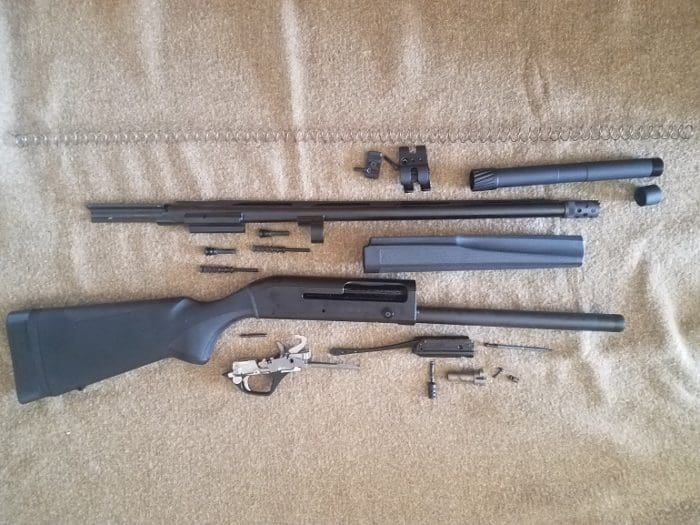
Unfortunately, semi-autos are rarely as reliable as pump guns. The great thing about shotguns, their versatility, is the downfall for any weapon that requires a specific load to cycle, as most autoloaders do. The Versa Max doesn’t have this problem. The Versaport gas system runs anything, perfectly.
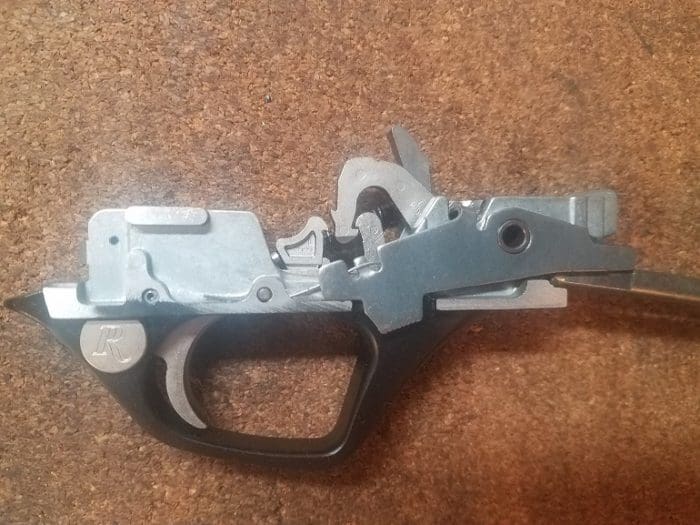
Over the last year, I’ve easily put 3,000 rounds through a few different models of Versa Max shotguns. Probably a lot more. Through each of these shotguns I’ve fired everything from #7 1/2 birdshot and target loads all the way to tons of buckshot and slugs. I’ve fired 2 3/4″, 3″, and 3 1/2″ shells. (I still see no reason for 3 1/2″ shells to exist, with the possible exception of some goose hunting.) I haven’t shot the 1 3/4″ mini shells, but others have without issue. I have not had a single failure to load, fire, or cycle with any of these models, with any shell, under any conditions.
Last year I took one of the Real Tree Pro models dove hunting up in North Texas. It got hot and sandy in the sunflower fields. It never failed. I borrowed a Sportsman model, and then used it and one of the Competition Tactical Models for duck and teal hunting. They got wet, cold and muddy. They never failed. (They hammered the teal this year!) I took a Competition Tactical model on a shotgun CQB course, where I put about 500 rounds of buckshot through it over a three-day weekend. It never failed.

See a pattern here? One of the reasons I was so hesitant to switch from a pump-action shotgun is the pump action’s supreme reliability. In fact, I was less reliable with the pump guns than I am with this Versa Max.
“Blasphemy!” you say. The Versa Max never failed at any time, under any condition. Every time I shouldered the gun, from any position, it fired and then was immediately ready to fire again.
My Mossy never failed ether. But I failed with it. You probably have, too. Ever short-cycle a pump gun? I have, and I bet I will again.
Before you say “practice more.” I’ll say “no, there are only so many hours in the day.” The Versa Max doesn’t care if I get stressed and I don’t quite make that bar travel that last half inch. It doesn’t care if I get excited during a mallard ducknado and don’t pay enough attention. It doesn’t care if I’ve bled out too much to be smart, or have all the feeling in my arms and hands. With its Versaport gas system, it just cycles the gun, every single time.
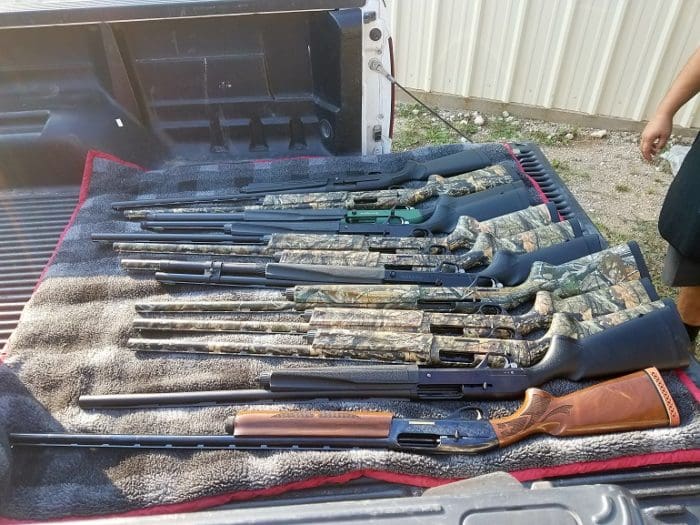
Since I had the chance to shoot several models, both borrowed guns from friends or from Remington, I had the opportunity to pick what my first semi-auto would be. In the end, the Tactical version was the one I wanted. It has a lot of the features I want that the hunter-specific versions don’t have, like an extended magazine tube and the enlarged loading gate.
The shorter 22″ barrel length doesn’t swing quite as well as the longer 26″ barrels, and I will certainly lose a little velocity. With how I shoot though, the only real difference I noticed was that I had to use a longer dowel as a plug to limit the gun to a maximum capacity of three rounds to keep it legal for hunting.
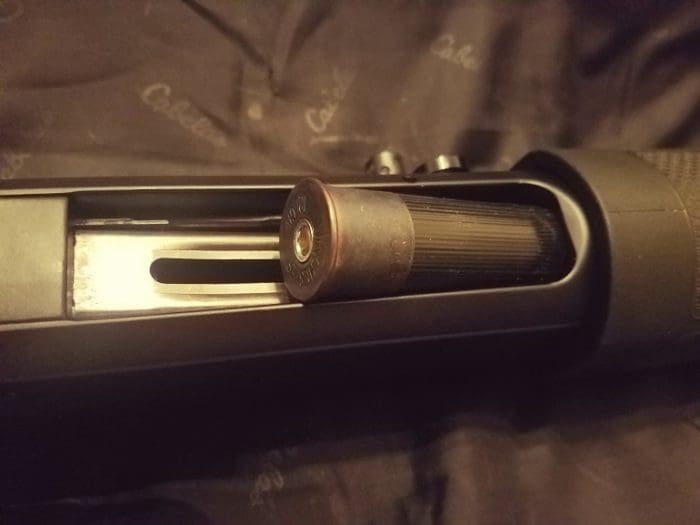
The Versa Max Tactical version comes with several extras, but a few are of particular note. First, like the Competition Tactical, it has an enlarged loading gate. No matter if it’s for a duty, competition, or going after the doves, you’re likely to need more rounds than the shotgun holds. So loading the gun as fast as possible is always helpful. The Versa Max Tactical is set up for easy single, dual or quad loading.
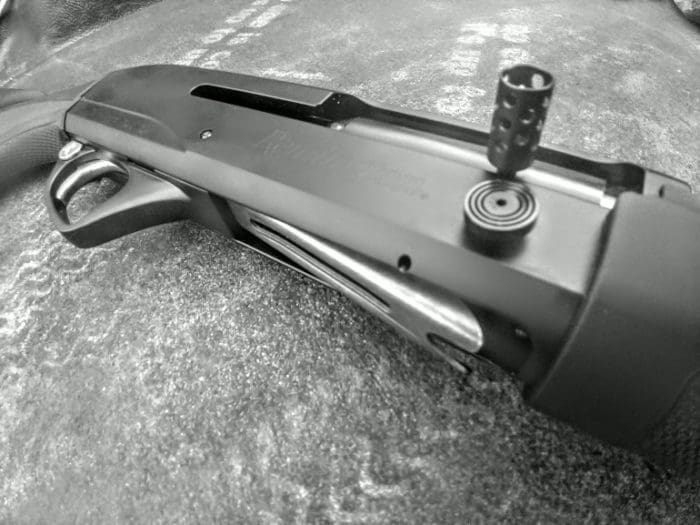
The Tactical version also includes big controls all the way around. The operating handle, the bolt-release button, and the safety are all larger than other versions. The oversized versions of most shotguns ought to be what’s standard.
If you are stressed and in need of a shotgun for defense, big controls help make up for that loss of fine motor control you will experience. If you’re hunting, you very well may be cold or wet, or both, and wearing gloves. Either way, the larger controls (notably the trigger guard, safety, charging handle and bolt release) included on the tactical model are a big plus.

Of course, it also has an extended tube for eight rounds of ammo and a barrel clamp for a sling and a short section of Picatinny rail.
The Versa Max Tactical comes with a bright-green fiber-optic front sight and a brass mid-bead. The receiver is drilled for an optic rail, and that rail is included with the package. That’s particularly valuable if you intend to use the shotgun as an occasional slug gun.
I had no trouble putting Breneke slugs into a 12-inch circle at 100 yards with the stock “irons”, so a rail-mounted scope would make this gun a deer- and bear-slaying machine for shotgun-only hunts.

If you haven’t spent any time with an auto-loader like this under a red-dot optic, don’t. Not until you’re ready to shell out the coin for the shotgun and the optic. It’s so fast, it feels like cheating. The ability to put eight 00 buck rounds into a target in fewer than three seconds, accurately, is pretty darn cool. The terminal effect is nothing short of awe inspiring.
The Versa Max uses Remington’s ProBore choke tube system. There’s a wide array of them available manufactured by about a bazillion different companies. If you have a 1100 G3 or Competition, Model 105 CTI, or the Premier Over/Under in 12 gauge, the same Remington Pro Bore chokes will work for the Versa Max and for those shotguns. The Versa Max Tactical comes with a flush Improved Cylinder choke as well as an extended “breacher” style cylinder bore choke. Both were easy to install and remove. For the flush tube, a wrench in included (I hate flush tubes).
With the Versa Max Tactical and Competition Tactical, I’ve shot quite a few rounds of buckshot and slugs with the cylinder bore tube. The Remington website advertises that the Versa Max recoil system reduces the recoil of 12 gauge to that of a pump-action 20 gauge. There are a whole lot of variables to consider in that statement, but I can verify that recoil is reduced when shooting 0000 buckshot through the Versa Max tactical with the cylinder bore tube.
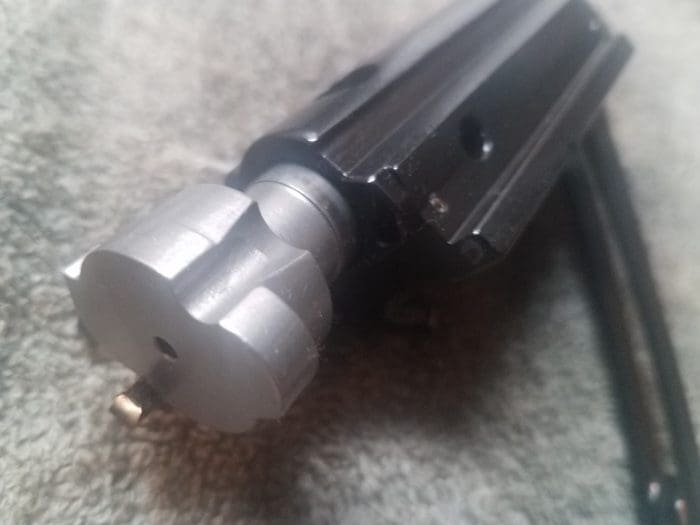
And it’s more than just “reduced.” This gun isn’t particularly light, but at 7 3/4 pounds it’s only 1/4 of a pound heavier than a similarly set up Remington 870 pump-action shotgun. The recoil reduction from the Versa Max is far more than can be accounted for by the weight of half a glass of water.
If your goal is to put ridiculous amounts of energy out of the muzzle in very short order, this is the shotgun for you. Every experienced shooter at The Range At Austin who shot this gun was surprised at how fast they could get eight rounds of 00 buck out of the chamber. There were a lot of smiles.
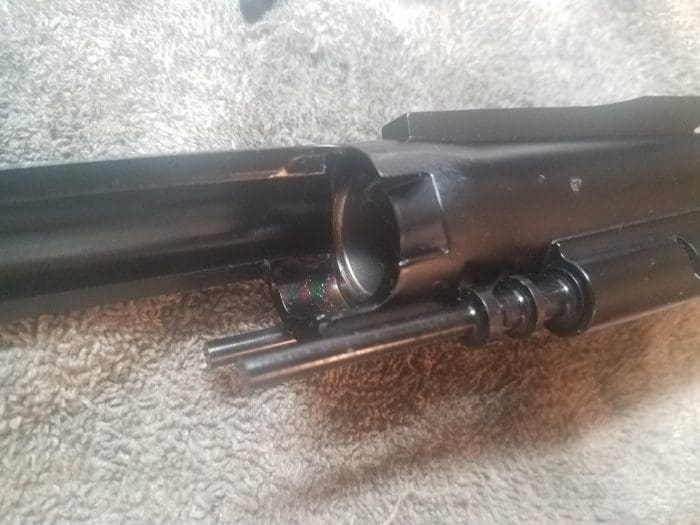
I highly recommend everyone go out and pattern their shotgun with the load and choke they intend to use for whatever particular task they are using the gun for. I went ahead and used a Carlson Pro Bore Long Beard Choke Tube and Winchester’s Long Beard ammunition with a borrowed Sportsman Versa Max.
I couldn’t get the Toms to pay any attention to me at all this year, they were all hen’d up. But if they would have gotten clear within 60 yards of me, that combination would have done the trick. Be advised, that combination of shotgun, choke, and ammunition will shoot tiny groups far away, but even with this reduced-recoil gun, you will surely know when you pulled the trigger.
Fit is important on any firearm, but never as important as it is with your shotgun. With a shotgun, you are expected to mount the gun to your shoulder and hit a small, fast target coming from any direction. That’s far more difficult if you have to work your body around the gun. The Versa Max helps solve this problem by allowing the user to modify the length of pull, comb height, drop, and cast right out of the box.
The ability to modify comb height and length of pull out of the box has been common in lots shotguns and rifles for a long time now. That length-of-pull adjustment is much appreciated for those of us more than six feet tall, and I’m sure even more so for those of you under 5’8″. It’s the drop and cast adjustment that’s the new interesting part.
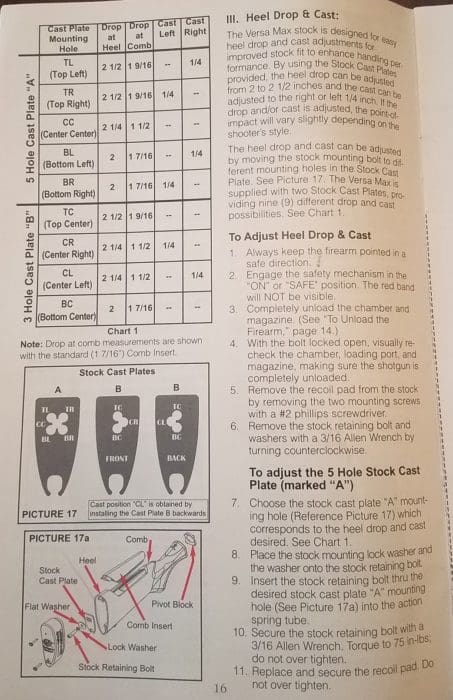
Cast and drop are modified by pulling the stock off and using one of two supplied cast plates. The best picture for explaining this isn’t actually the gun, but the instruction manual itself. The effect is subtle to the eye, but fare more meaningful once you mount the gun.
The Versa Max fits me out of the box … kinda … a little. But modified with the lowest comb height, added 3/4 inch on the length of pull, and moving to a 2-inch drop at the heel and 1/4-inch right cast, the gun fits perfectly. Making those adjustments took me 10 minutes and all I needed was a screwdriver and the supplied hex wrench.
The value of this level of adjustment, easily modifiable by the user, just can’t be overstated. I knew my stock shotguns didn’t quite fit, but I didn’t realize how much they didn’t fit until this shotgun.

Set up as above, it made an immediate difference in my clay shooting. Not so much with the clays going out, but definitely with the disks going across the field at closer ranges. I have to get in front of those clays fast, and I’m just not that fast. But by not fighting the gun, by making fewer movements to get the muzzle where it needs to be, I was hitting those cross-flying clays at a much higher percentage. Birds too.
As Nick noted in his review, the thing that gave me pause with this gun was the price. An MSRP of almost $1,500 is no joke. Yes, that’s in line with other autoloaders of this quality. But dang, all of my pump guns have been dirt cheep, and most of them have run well enough, after I did some work on them and got used to them.
The good news is that the MSRP is grossly more than what the gun is actually being sold for. The first three major dealers I checked online sold this same model for right around a grand. If you want the versions more geared directly to hunting, you can get one for $700 to $800 pretty easily.
Be on the lookout for sales of the Versa Max and V3. Last fall, when I suspected that I wanted this shotgun but hadn’t committed, Remington offered a rebate that, combined with the sale price offered to the public, would have amounted to $100 less than what I paid for the gun. If they offer those rebates again this year, I will be picking up at least one more of these shotguns. This is a good gun, but at those prices, it’s also an incredible value.
I’ll put it as simply as I can. If I was to walk out the door right now into an uncertain future, and I could take only one gun, the Remington Versa Max Tactical would be it. I can’t give a gun higher praise than that.

Specifications: Remington Versa Max Tactical Shotgun
Caliber: 12 Gauge
Barrell: 22-inch barrel
Capacity: 8 (2 3/4-inch shells), 7 (3-inch shells)
Receiver Finish: Anodized Aluminum
Overall Length: 43 15/16 inches
Length of Pull: 14 1/4 inches
Drop (Comb): 1 1/2 inches
Drop (Heel): 2 7/16 inches
Stock: Synthetic stock, w/overmolded grips
Sights: HiViz®/Interchangeable
Avg. Wt.: 7 3/4 lbs
MSRP: $1,456 (easily found for 70% of MSRP and less.)
Ratings (out of five stars):
Fit and Finish * * *
It’s “tactical black.” I don’t care because it’ll get rattle-canned anyway. Probably a few times. The finish is smooth and even throughout. The internals are polished and smooth without burs or rough edges where there shouldn’t be.
Customization * * * * *
There are already quite a few aftermarket parts for this series of rifles, but the options available from Remington are beyond what most offer in this segment. The ability to alter the fit of the gun so significantly sets them above their competition.
Reliability * * * * *
All the stars. Whatever stars we have for reliability, the Versa Max gets them all. Any round, any condition. The gun runs.
Accuracy * * * * *
Not sure how this category fits for a shotgun, but it makes repeatable patterns. The included rail allows for great use of slugs or fast use of buckshot, depending on the optic.
Overall * * * * *
Infinitely reliable, versatile, and practical. The Remington Versa Max is everything a shotgun is supposed to be. I’d trust my hunt or my life with this gun any day of the week.
More from The Truth About Guns:
Benelli Rolls Out an Updated M2 3-Gun Competition Edition

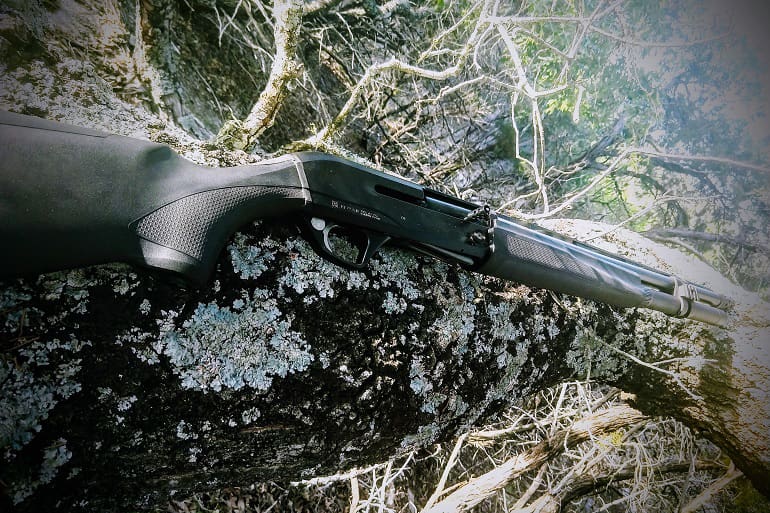



i’m with Nick. i’d love to own a semi SG but they are just too damn high. i don’t shoot it anyways, the pump is just for HD.
Yeah I’m with you…I’ll keep my lowly Maverick88 20″ barrel 7+1(
8 with Herter’s Mini shells). I only have it for home defense. I would like a semiautomatic shottie but damn!
The mossburg 930 is startlingly cheap for what you get. Gas operated semi-auto, so it’s a little choosy about shells, but I’ve heard great things. It’s only around $400 street before taxes and all that. So it’s well within the range of pumps in my mind.
The 930spx I have eats whatever I can stuff in it. No issues. I’ve been trying to find the cheapest possible bird/low brass to make it not work, but no luck yet. Bulk Win white box from Wally World is the typical junk I throw in it. Anything with high brass is no problem. 7+1, $600-$650. Solid purchase.
Agreed on the 930. Great gun for the price.
How does it fare with cheap steel hulls?
The only steel that got run through it was some military buck. No issues.
Psst, those “brass” low wall shotgun shells, are just brass washed steel.
Huh. I’ll add this to my list for “when I have the money.”
Sounds pretty much perfect.
Sounds good, but I might have thought you would have chosen the V3. I like everything about your choice except the short barrel.
Also, did you really mean “The inertia driven action runs anything, perfectly.” when you later said “With its Versaport gas system, it just cycles the gun, every single time.”?
It has gas ports, like the Benelli M4. They are in different places on the gun, and it’s that Versa Port system that allows it to handle shells of any size.
The photo of the bolt reminded me of the bolt in my M-1 Super 90.
Great review Jon
More shotguns are going with inertial drive instead of gas operation. I’ve a stoeger 3000 which is a little rough on recoil and a beretta a400 that shoots slugs only which is far operated and easier on recoil. I also have a benelli M1 90 for defensive use which is light and reliable.
I like the beretta best for shooting but it’s a special purpose deer gun.
I might look at the V3 for my next irrational purchase but the stoeger might need to go.
Anyone compare this to a FN SLP Mk I Tactical? (FN has the worst customer service in the world btw)
Nick did a direct comparison in his review. Versa Max won.
http://www.thetruthaboutguns.com/2017/04/foghorn/gun-review-remington-versamax-competition-tactical-shotgun/
$1500 for a frickin’ work shotgun?
Ahem. I can have a pair of decent ARs for that in today’s marketplace.
John
I imagine that different economic circumstances produce different calculations of value. JWT doesn’t seem to have a very restrictive budget compared to most of us.
Oh, and since when is shooting birds “work”?!;-)
When you miss.
From what I’ve heard, once you get lots (and lots) of shells through them, you’ll need to start swapping parts to keep it reliable, but otherwise are good to go. You also need to clean it a bit more often than a Benelli, but such is life.
Thanks for the in depth reviews, JWT, you’re one of the main reasons to keep reading TTAG!
remmy. huh. i guess. gettin’ their act together.
so it is inertia driven. from what i’ve read, that’s the goose’s honk. (duck’s quack?).
i’d rather buy made here than italy, but they invented it. still, i’ve got 12 and 16ga 37’s and those are winchester’s expired patents.
seems like the shortened barrel and lengthened mag really does make this model versa- tile. my head spins at all those variations. this one looks excellent.
aarghh. gas piston. less interested now.
i think this statement, “The Versaport gas system runs anything, perfectly.” was inserted to replace this original statement, “The inertia driven action runs anything, perfectly.”
“aarghh. gas piston. less interested now.”
Actually, I think it’s the use of those pistons (actually, tappets) that makes it more reliable. You get different amounts of recoil with different loads, which can greatly affect the energy put into the bolt in pure inertia systems. That makes it really hard to get a recoil system that works at the extreme ends of the various load powers.
By using the gas, especially with various numbers of ports blocked by different length shells, you can get a much more controlled and consistent push on the both, especially since the limited travel of the tappets inherently limits the maximum velocity even when there’s still gas pouring into the system.
WHY would anyone take the Remington experiment and spend real money on a shotgun of this level??? Benelli and Beretta make high quality shotguns in this field and similar price points. I paid 1200 for my new Super black eagle 2, I did that because the gun has a very long track record with many sold and used and abused. If you buy a Remington, you are out of your mind. They WERE a great company, don’t be a test subject.
Omg…Someone doesn’t believe what I believe, or think the way I think, “you (must be) out of your mind.” Don’t be upset because you spent a couple of a hundred bucks more for the Black Eagle II, it’s a fine shotgun. Although, to bring it up to the competition level of the reviewed Versa Max Tactical, will cost you AT LEAST another couple of hundred dollars(likely more).
Attend some 3 gun matches sometimes and you will find Versa Max’es (or is that Versa Maxi) running like sewing machines. (Even giving the competitors a slight advantage because the lower recoil allows them to bring the gun back on target faster.)
…hmmmmm…I get the ever-so-slight impression that the author had a favorable view of this shotgun.
🙂
Yep, and considering the opinion I’ve had of Remington shotguns for a while, writing this review was like eating a big old plate of crow enchiladas.
I have put thousands of rounds through my Versamax shooting 3-gun and it is incredibly reliable and soft shooting with every kind of ammo. I love it and wouldn’t trade it for anything out there. It will even cycle flawlessly shooting the ultra low recoil loads that won’t cycle inertia guns. Recoil is non-existent. This isn’t an inertia action like a Benelli M2. It is a gas piston action like the M4. The chamber and bolt stay quite clean.
I would highlight 2 issues I have with it. First, accuracy with rifled slugs is horrific. Only Sluggers even get close to acceptable accuracy. Second, I hate that you can’t get an 18in barrel on the “tactical” gun. They make one. They just wont sell you one unless you are mil/le, even though it is perfectly legal.
Although I didn’t want the shorter barrel, I was also confused that the 18″ wasn’t what they offered. It doesn’t make sense to me to not offer a legal option when you manufacture it.
This is simple, if anyone has a gun that runs stick with it, regardless of brand. If you are buying a new gun, a $1500 gun, why the hell would you buy a Remington? As a company they are a joke in the gun community, they used to have a sterling reputation and they have ruined that. They didn’t invent a new wiget, its a shotgun, other companies make great ones. Remember that, other companies have and continue to prove themselves, I think Beretta is 600 years old? Benelli isn’t super old but Cmon, is Remington even Remington anymore???? I am supremely suspicious of this entire review, and it’s lovely to run them in the desert but they should also be run in blinding rain, snow, and ice. One you break them free in freezing weather do they still cycle? I always though tests like that were nonsense but if you really get into hunting you will spend time in those conditions……
I also experimented with 1 3/4″ shells in my VM Tactical. For me they didn’t work at all. Even though they would cycle the action, they would always double-feed—two coming out of the magazine at a time. The only loads I had trouble were the “less lethal” rounds that don’t have enough power cycle the action.
The only other problem I had with it was the “barbecue fork” loading gate. Replacing it with one from their competition model solved the thumb injuries.
Other than that, the only other issue I’ve had with mine is the loose nut behind the trigger causing too many misses. 😁
Other people commented on the loading gate as well, but I didn’t have a problem with it. It probably means I am loading wrong. I can tell you I am certainly not loading fast.
The “non-competition” loading gate and port have a tendency to rip up thumbs if you are going fast. I had a smith open up the well and weld the forks closed on the gate (this was before the competition model was available.
It’s basically a Benelli M4.
My biggest complaint is the handguard moves/wiggles and a $1400 shotgun shouldn’t do that.
Otherwise mine has run well for as long as I had it, much better than my 870 which is a pile.
Though if I had to do it over, I would probably go with a Benelli.
I don’t disagree, but the M4 is still more expensive AND it would cost more to get set up for 3gun.
Funny thing…the only reason I went with the VM initially was that the JM930 was backordered at the time! I haven’t regretted my impatience.
Oh..and a little loctite on the stock bolt would solve your problem.
Figured coming out bankruptcy they would have lowered the MSRP? Maybe try get customers back?
It’s a dual tappet (short stroke piston) system. The gas pushes against two pistons that only move a short distance—less than an inch—accelerating the bolt to full speed within that distance. The rest of the bolt’s rearward travel is via the inertia it receives from the tappets.
Thank you. I was struggling to describe the action and you described it succinctly.
While I appreciate the review, I’m not giving up my Remington 870 P.
– Top folding stock: Check.
– 7 round capacity: Check.
– Removable mag extension: Check.
– Ability to switch to fixed stock: Check.
– Ability to use longer barrels: Check.
– Sling swivels installed: Check.
When my shotgun goes bang I automatically rack the slide. Been doing it for more years than I care to mention. I’m not going to mess with success.
Charlie
So, basically, what they’ve done is copy the Beretta A390/A391.
Why bother paying more? Go into the used market and get a A390.
Beretta Pintail. Made in Spain. Works like a champ. Swapped a milsurp sks for it. Not real fond of it but it works. And works.
I think it’s the steel receiver. I’m so used to Mossbergs and their aluminum receivers that steel guns feel ‘off’ to me. But it runs like a champ.
Too little, too late from Remington. My long experience has led me to never again buy any Remington centerfire autoloader, because I’ve never found one to be reliable and durable. And I have had more Remington long guns than any other brand. This one may work, but I’ll never know because I no longer trust Remington enough to take that chance again.
I have experience with Remington Versa Max Competition Tactical. Extremely reliable shotgun. Recoil is soft even with heavy loads.
You show a “clamp” on your competition tactical VersaMax that clamps the barrel and magazine tube. What is it and where do I get one? Thanks.
I also experimented with minishells in my VM Tac Comp. They also don’t work. The shells never extract and it also double feeds. They are the only shells that have failed to work in my VM (normally runs like a top). I feel like “others have with no issue” may be misleading. I love my VM, but it sure doesn’t love those minishells. I plan on using them to shoot trap, the FTE will mean I don’t need to bend over to retrieve shells and will no longer pelt my neighbor on the line with empties.
Why does anybody care about the mini-shells? Are they less expensive? Is it because you can load more of them into the magazine?
In which case, why isn’t there a hue and cry about using .22 short and/or .22 long — NOT .22 LR for those of you who don’t know that there was (is?) a shorter alternative to the ubiquitous .22 LR — and attendant reliability issues in autoloaders?
Forget the mini-shells, and forget the 3.5″. They purport to solve problems that, IMO, don’t really exist. But that’s not what Marketing departments are directed to say.
On the cost front, I don’t get the cheapskate mentality. In my experience, you can oftentimes buy a whole lot more quality for not too much more money. (OTOH, some people buy Mitsubishi vehicles, etc. only on price, and good luck to them…) But for perspective, maybe put your $400 budget into an inflation-adjustment calculator, and see what it would have bought in 1970 or 1980 or 1990. I bet some of you who think $400 is the right price-point for a shotgun spend that much in less than 6 months on your cable-television subscription.
Lastly, JW, I enjoyed the review, but “cheep” is a sound a small bird makes, and in your ‘Customization’ review section, you reference Remington’s “rifles” instead of shotguns.
If you love to wear vests? so get this amazing Red Puffer Vest which is a favorite of all girls and it is the most-rated and most selling outfit in our store, shop now because the stock is limited.